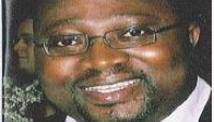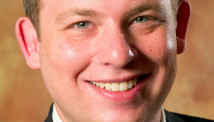CHICAGO (AP) — He did it. He finally admitted it. Lance Armstrong doped.
He was light on the details and didn't name names. He mused that he might not have been caught if not for his comeback in 2009. And he was certain his "fate was sealed" when longtime friend, training partner and trusted lieutenant George Hincapie, who was along for the ride on all seven of Armstrong's Tour de France wins from 1999-2005, was forced to give him up to anti-doping authorities.
But right from the start and more than two dozen times during the first of a two-part interview Thursday night with Oprah Winfrey on her OWN network, the disgraced former cycling champion acknowledged what he had lied about repeatedly for years, and what had been one of the worst-kept secrets for the better part of a week: He was the ringleader of an elaborate doping scheme on a U.S. Postal Service team that swept him to the top of the podium at the Tour de France time after time.
"I'm a flawed character," he said.
Did it feel wrong?
"No," Armstrong replied. "Scary."
"Did you feel bad about it?" Winfrey pressed him.
"No," he said. "Even scarier."
"Did you feel in any way that you were cheating?"
"No," Armstrong paused. "Scariest."
"I went and looked up the definition of cheat," he added a moment later. "And the definition is to gain an advantage on a rival or foe. I didn't view it that way. I viewed it as a level playing field."
Wearing a blue blazer and open-neck shirt, Armstrong was direct and matter-of-fact, neither pained nor defensive. He looked straight ahead. There were no tears and very few laughs.
He dodged few questions and refused to implicate anyone else, even as he said it was humanly impossible to win seven straight Tours without doping.
"I'm not comfortable talking about other people," Armstrong said. "I don't want to accuse anybody."
Whether his televised confession will help or hurt Armstrong's bruised reputation and his already-tenuous defense in at least two pending lawsuits, and possibly a third, remains to be seen. Either way, a story that seemed too good to be true — cancer survivor returns to win one of sport's most grueling events seven times in a row — was revealed to be just that.
"This story was so perfect for so long. It's this myth, this perfect story, and it wasn't true," he said.
Winfrey got right to the point when the interview began, asking for yes-or-no answers to five questions.
Did Armstrong take banned substances? "Yes."
Did that include the blood-booster EPO? "Yes."
Did he do blood doping and use transfusions? "Yes."
Did he use testosterone, cortisone and human growth hormone? "Yes."
Did he take banned substances or blood dope in all his Tour wins? "Yes."
In his climb to the top, Armstrong cast aside teammates who questioned his tactics, yet swore he raced clean and tried to silence anyone who said otherwise. Ruthless and rich enough to settle any score, no place seemed beyond his reach — courtrooms, the court of public opinion, even along the roads of his sport's most prestigious race.
That relentless pursuit was one of the things that Armstrong said he regretted most.
"I deserve this," he said twice.
"It's a major flaw, and it's a guy who expected to get whatever he wanted and to control every outcome. And it's inexcusable. And when I say there are people who will hear this and never forgive me, I understand that. I do. ...
"That defiance, that attitude, that arrogance, you cannot deny it."
Armstrong said he started doping in mid-1990s but didn't when he finished third in his comeback attempt.
Anti-doping officials have said nothing short of a confession under oath — "not talking to a talk-show host," is how World Anti-Doping Agency director general David Howman put it — could prompt a reconsideration of Armstrong's lifetime ban from sanctioned events.
He's also had discussions with officials at the U.S. Anti-Doping Agency, whose 1,000-page report in October included testimony from nearly a dozen former teammates and led to stripping Armstrong of his Tour titles. Shortly after, he lost nearly all his endorsements, was forced to walk away from the Livestrong cancer charity he founded in 1997, and just this week was stripped of his bronze medal from the 2000 Olympics.
Armstrong could provide information that might get his ban reduced to eight years. By then, he would be 49. He returned to triathlons, where he began his professional career as a teenager, after retiring from cycling in 2011, and has told people he's desperate to get back.
Initial reaction from anti-doping officials ranged from hostile to cool.
WADA president John Fahey derided Armstrong's defense that he doped to create "a level playing field" as "a convenient way of justifying what he did — a fraud."
"He was wrong, he cheated and there was no excuse for what he did," Fahey said by telephone in Australia.
If Armstrong "was looking for redemption," Fahey added, "he didn't succeed in getting that."
USADA chief Travis Tygart, who pursued the case against Armstrong when others had stopped, said the cyclist's confession was just a start.
"Tonight, Lance Armstrong finally acknowledged that his cycling career was built on a powerful combination of doping and deceit," Tygart said. "His admission that he doped throughout his career is a small step in the right direction. But if he is sincere in his desire to correct his past mistakes, he will testify under oath about the full extent of his doping activities."
Livestrong issued a statement that said the charity was "disappointed by the news that Lance Armstrong misled people during and after his cycling career, including us."
"Earlier this week, Lance apologized to our staff and we accepted his apology in order to move on and chart a strong, independent course," it said.
The interview revealed very few details about Armstrong's performance-enhancing regimen that would surprise anti-doping officials.
What he called "my cocktail" contained the steroid testosterone and the blood-booster erythropoetein, or EPO, "but not a lot," Armstrong said. That was on top of blood-doping, which involved removing his own blood and weeks later re-injecting it into his system.
All of it was designed to build strength and endurance, but it became so routine that Armstrong described it as "like saying we have to have air in our tires or water in our bottles."
"That was, in my view, part of the job," he said.
Armstrong was evasive, or begged off entirely, when Winfrey tried to connect his use to others who aided or abetted the performance-enhancing scheme on the USPS team
When she asked him about Italian doctor Michele Ferrari, who was implicated in doping-related scrapes and has also been banned from cycling for life, Armstrong replied, "It's hard to talk about some of these things and not mention names. There are people in this story, they're good people and we've all made mistakes ... they're not monsters, not toxic and not evil, and I viewed Michele Ferrari as a good man and smart man and still do."
But that's nearly all Armstrong would say about the physician that some reports have suggested educated the cyclist about doping and looked after other aspects of his training program.
He was almost as reluctant to discuss claims by former teammates Tyler Hamilton and Floyd Landis that Armstrong told them, separately, that he tested positive during the 2001 Tour de Suisse and conspired with officials of the International Cycling Union officials to cover it up — in exchange for a donation.
"That story wasn't true. There was no positive test, no paying off of the labs. There was no secret meeting with the lab director," he said.
Winfrey pressed him again, asking if the money he donated wasn't part of a tit-for-tat agreement, "Why make it?"
"Because they asked me to," Armstrong began.
"This is impossible for me to answer and have anybody believe it," he said. "It was not in exchange for any cover-up. ... I have every incentive here to tell you yes."
Finally, he summed up the entire episode this way: "I was retired. ... They needed money."
Ultimately, though, it was Landis who did the most damage to Armstrong's story. Landis was stripped of the 2006 Tour title after testing positive and wound up on the sport's fringes looking for work. Armstrong said his former teammate threatened to release potentially destructive videos if he wasn't given a spot on the team. That was in 2009, when Armstrong returned to the Tour after four years off.
Winfrey asked whether Landis' decision to talk was "the tipping point."
"I'd agree with that. I might back it up a little and talk about the comeback. I think the comeback didn't sit well with Floyd," Armstrong recalled.
"Do you regret now coming back?"
"I do. We wouldn't be sitting here if I didn't come back," he said.
The closest Armstrong came to contrition was when Winfrey asked him about his apologies in recent days, notably to former teammate Frankie Andreu, who struggled to find work in cycling after Armstrong dropped him from the USPS team, as well as his wife, Betsy. Armstrong said she was jealous of his success, and invented stories about his doping as part of a long-running vendetta.
"Have you made peace?" Winfrey asked.
"No," Armstrong replied, "because they've been hurt too badly, and a 40-minute (phone) conversation isn't enough."
He also called London Sunday Times reporter David Walsh as well as Emma O'Reilly, who worked as a masseuse for the USPS team and later provided considerable material for a critical book Walsh wrote about Armstrong and his role in cycling's doping culture.
Armstrong subsequently sued for libel in Britain and won a $500,000 judgment against the newspaper, which is now suing to get the money back. Armstrong was, if anything, even more vicious in the way he went after O'Reilly. He intimated she was let go from the Postal team because she seemed more interested in personal relationships than professional ones.
"What do you want to say about Emma O'Reilly?" Winfrey asked.
"She, she's one of these people that I have to apologize to. She's one of these people that got run over, got bullied."
"You sued her?"
"To be honest, Oprah, we sued so many people I don't even," Armstrong said, then paused, "I'm sure we did."
Near the end of the first interview installment, Winfrey asked about a federal investigation of Armstrong that was dropped by the Justice Department without charges.
"When they dropped the case, did you think: 'Now, finally over, done, victory'?"
Armstrong looked up. He exhaled.
"It's hard to define victory," he said. "But I thought I was out of the woods."
___
AP Sports Writers Jim Vertuno in Austin, Texas, Eddie Pells in Denver and Dennis Passa in Melbourne contributed to this report.


